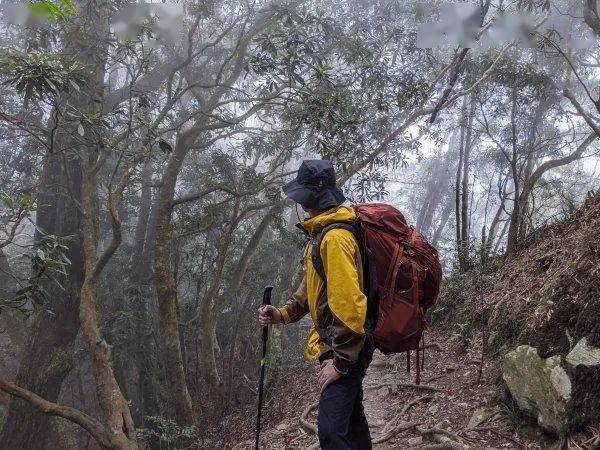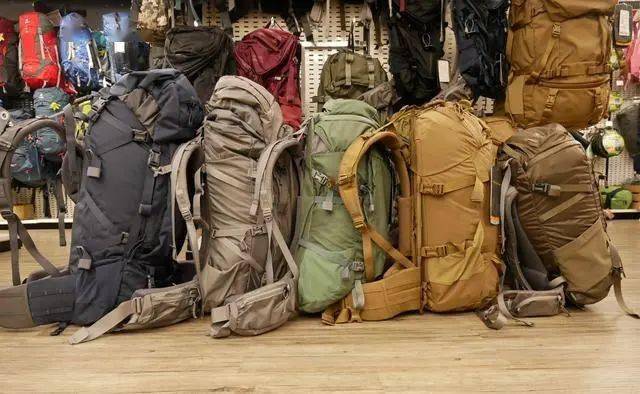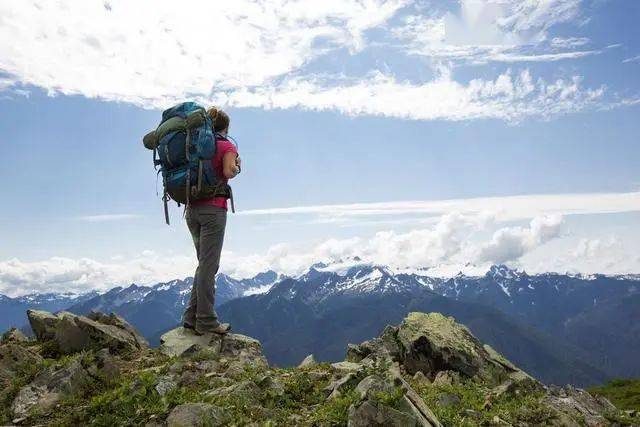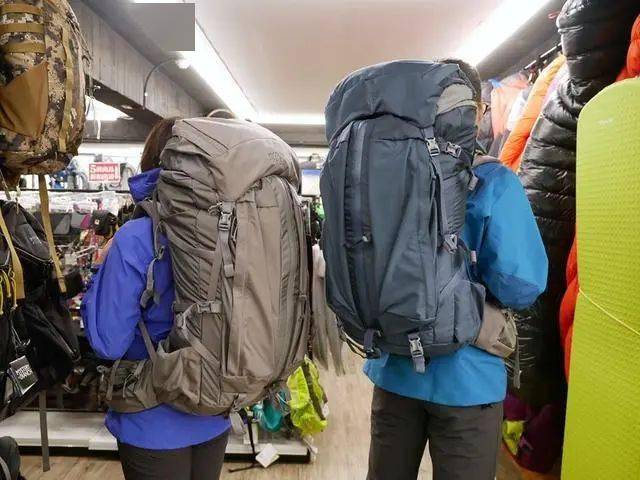Strong comprehensive service capability: Amazon TOP10 brands supplier, perfect quality control system.Fast proofing: 2 days for regular proofing, 6 days for custom proofing


Mountaineering-related knowledge is extensive and profound, so organize the relevant mountaineering knowledge you have learned so that you can quickly browse it and share it with those who love mountaineering. Let’s talk together. Let’s start with the outdoor backpack that everyone needs. If you explain the mistakes, please Please advise.
Backpack composition: top bag, carrying strap, chest strap, adjustment strap, pressure relief strap, waist belt, waist pad and back panel.
The first point in choosing a backpack: fit. The fit can transfer the load to the whole body according to the ergonomic design of the backpack (usually the waist is the main part), and reduce the pressure on the shoulders. Usually the size and board type of each brand are different. It is recommended to go to a professional supply store to try the back and you need to carry a load when you try to carry it to reflect the real use situation. The test back weight is generally recommended to be 10 kg. In addition, some backpack manufacturers provide backpack measurement back plates, which can quickly determine the size of the backpack according to the length of the person's back. A well-fitting backpack can also avoid the unstable center of gravity caused by excessive shaking when passing through rough terrain.

Below 30 liters
Suitable for one-day trekking, usually without belt and chest strap
30-45 liters
Suitable for a day trip, overnight in a mountain house in summer (no tent)
With top cover, chest buckle and waist belt
Capacity can be put into normal sleeping bag
45 liters or more
Suitable for multi-day trips, mountain houses in winter or overnight trips
It is recommended for a two-day itinerary of 50 liters (without tent), a three- to four-day itinerary of 75 liters, and more than 80 or 90 liters is recommended for more than one week
A backpack with a larger number of liters is also relatively heavy
A brief estimate of the upper limit of the backpack load: the maximum suitable load of the backpack = the volume that the backpack can hold/2.5.
25 liters
The maximum load weight is about 10kg
50 liters
The maximum load weight is about 20kg
75 liters
The maximum load weight is about 30kg
Discussion on lightweight backpacks: Lightweight backpacks often carry a system that cannot carry heavier weight, so the contents must also be lightweight to complement each other to achieve the expected benefits. The more lightweight items with the same performance are, the more expensive they are, which is a part that requires additional attention.
Backpack storage: The quality of the backpack storage system of the same liters will determine the difficulty of the counterweight and the convenience of access to the items. In addition, the storage system also includes the related design of the external binding of the backpack. For large backpacks, pay attention to whether there is a top bag for easy access, so that mountain friends can adjust the size and weight of the backpack more flexibly according to the route. (Note: The waist bag can also be used as a top attack bag).
The maximum capacity in liters of the plane on your back without checking: A friend told you about 40 liters (please advise if you make a mistake, some backpacks can be adjusted to 50 liters).
Try to avoid external hanging: Too many external hanging or large objects are easy to hook the plants on both sides when climbing, causing difficulty and danger in climbing. In addition, when sleeping bags and sleeping mats are hung outside, you must pay attention to the distance to your side if you need to turn around on the cliff section to avoid affecting the center of gravity and causing danger.
Waterproofing must be done in addition to the backpack cover: It is inevitable that it will rain during the climbing process. At this time, the backpack cover can provide the backpack with the first waterproof. However, if the rain keeps falling and the backpack is close to the back of the person, it will not be able to withstand the possibility of rain infiltration. Therefore, it is recommended to use waterproof compression straps or large black garbage bags in the backpack to make waterproof, avoid sleeping belts, electrical products Wait until it gets wet and damaged.
Discussion on the weight of the backpack: Usually the weight of the backpack below 40 liters has little difference, and no additional discussion is required. There are obvious differences in the weight of backpacks of more than 40 liters. Military backpacks are usually sewn with heavy materials. The advantage is that they can carry heavier weight and are more durable. The disadvantage is that they will cause extra weight. (Reference value: Generally, the net weight of a 75-liter backpack is about 3 kg, and the net weight of a 60-liter backpack is about 2.4 kg. Of course, the weight can be reduced as the material improves).
You can find trees or rocks to lean on when you take a short break with a large backpack, it is not necessary to unload it.
What is the top packaging? Portable medicines, jackets, drinking water, mobile food, mobile phones, etc.

Packing principle: Two principles: balanced weight and convenient access. (After putting everything in place, remember to tighten the strap)
ABCs
Accessibility: Convenience of item access (backpack sub-bag design, use of compression bags in the backpack, layered bag placement)
Balance: The balance of the overall weight (left and right balance, not equal weight, but the part close to the center of the lower edge of our scapula is the heaviest. In addition, as the amount of water increases or decreases, the consumption of food needs to be adjusted continuously.)
Comspanssion: Compression (All items that can be compressed are compressed (such as sleeping bags, clothing, etc.). If you can't compress, you can also fill the gap with small objects. You can buy a waterproof compression bag)
Streamline (Streamline): (Appearance to check whether the backpack is full, and try to minimize external hangs)
Top pocket
Items commonly used in operations: toilet paper, garbage bags, headlights, etc., whistle.
Items needed for light or emergency situations: such as raincoats and rain pants, first-aid supplies, and some action food.
Big bag backrest
Heavy items must be placed on the backrest: such as stove, food, charging equipment, camera, etc.
Fruits and vegetables that are not resistant to heavy pressure can be placed on pots and above cold-resistant clothing that can be taken at any time.
Big bag on the outside
Light things: windbreaker jacket, sun hat, slippers, etc.
Bottom of big bag
Infrequently used equipment: such as sleeping bags, clothes to change to a mountain house or overnight stay, etc.
Loose down jackets, etc. occupy the most space, it is recommended to use compression bags for storage
It is recommended to roll up the clothes that are not to be worn in long strips
Description of 4 major backpack systems:

Back protection system design
The special design of the 3D gauze allows airflow to flow between the backpack and the back, keeping perspiration dry and avoiding the discomfort that sweat cannot be discharged.
In addition, the weight of the backpack will compress the back muscles, so a cushion is usually designed between the backpack and the lower back of the human body, which can avoid long-term muscle fatigue and redness caused by friction.
Strap system design
Human factors engineering carrying system three belts (chest belt, waist belt and shoulder belt): adjust the weight by adjusting the belt, chest: waist: shoulder = 15:30:55
Shoulder straps: 1. Three-dimensional tailoring (with curvature), 2. The interlayer of the strap has elastic foam for cushioning and dispersing shoulder pressure, 3. The shoulder strap is made of anti-slip and breathable material on the shoulder.
Belt: Generally, 30% of the load is carried. Transferring too much weight to the belt can reduce the burden on the shoulders, but it should not be too much. If the shoulders are loosened if they are transferred too much, the overall flexibility and fit will deteriorate.
Chest strap: Tighten the shoulder straps on both sides to prevent the human body from leaning when walking. When passing through a high and one low terrain, the back is unbalanced. Advantages 1. To prevent the shoulders from sinking and the shoulder straps to fall off, 2. To spread a part of the load to the chest (usually about 15%).
Support system design
The purpose of the back frame is to fix and support the overall structure of the backpack, so that the shape of the backpack will not be affected by the weight of the backpack, which will cause discomfort.
In the early days, there were aluminum frames and wooden back frame systems; nowadays, hidden back frames are mainly used, and high-strength aluminum alloy, composite material back frames and back plates are used.
Compared with the traditional external display back frame, the new generation of hidden back frame can be smaller and lighter in weight. When walking on a narrow hill, it can avoid collisions with rock walls and tree trunks to reduce the risk of falling.
Secondary bag system design
The traditional design is to design a side pocket of the same size on both sides of the backpack. This design increases the width of the backpack. With the increase in the number of liters of the backpack, the total width of the backpack will be much larger than the human body, and it will be inconvenient to travel on narrow mountain roads.
Nowadays, most designs do not use large side pockets on both sides, especially backpacks with a capacity of more than 50 liters. Instead, the height of the backpack is increased. The increase in the height of the backpack needs to be equipped with a new generation of carrying system to avoid the degree of shaking left and right as the height of the backpack increases.